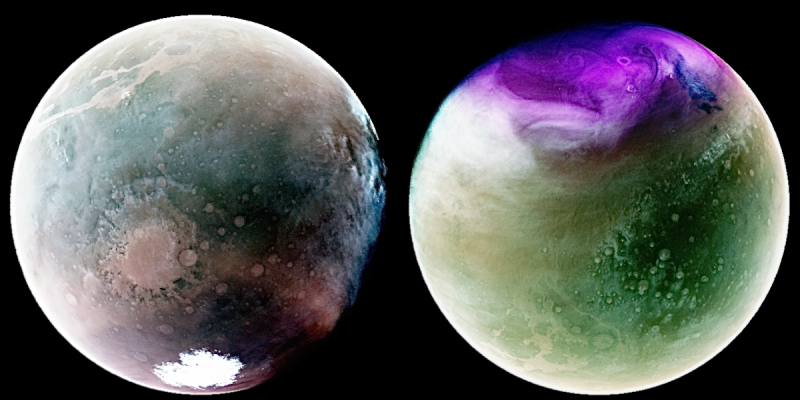MAVEN s Ultraviolet Mars

Explanation:
These
two global views of Mars
were captured at ultraviolet wavelengths,
beyond the spectrum
visible to human eyes.
Recorded by the
MAVEN spacecraft's
Imaging Ultraviolet Spectrograph
instrument in July 2022 (left) and January 2023,
three otherwise invisible ultraviolet bands are mapped into
red, green, and blue colors.
That color scheme presents the
Red Planet's surface
features in shades of tan and green.
Haze and clouds appear white or blue, while high altitude ozone takes
on a dramatic purple hue.
On the left, Mars' south polar ice cap is in brilliant white
at the bottom but shrinking during
the southern hemisphere's
summer season.
On the right, the northern hemisphere's polar region is seen
shrouded in clouds and atmospheric ozone.
Known to some as the Mars Atmosphere and Volatile EvolutioN spacecraft,
MAVEN has been exploring Mars' tenuous upper atmosphere,
ionosphere, and its interactions with the Sun and solar wind
since 2014.
Authors & editors:
Robert Nemiroff
(MTU) &
Jerry Bonnell
(USRA)
NASA Web Site Statements, Warnings,
and Disclaimers
NASA Official: Jay Norris.
Specific
rights apply.
A service of:
LHEA at
NASA /
GSFC
& Michigan Tech. U.

